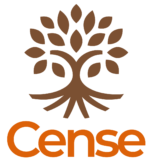
Among the greatest challenges of doing research and evaluation is ensuring you get participation from enough (and the right) people. Surveys are everywhere. It feels like everyone wants our feedback on just about everything. Yet, the more surveys out there the more we should be concerned about data quality, too.
On top of that, we are surrounded by media messages, distractions, and ‘noise’ that can make attention a very precious (and rare) commodity.
It can be daunting.
How do we get people to participate and get good quality data from that participation amongst the noise? We’re going to outline an approach to data collection that goes from methods to conversations.
From Methods to Conversations

There is a lot of research on improving existing methods like surveys or asking better questions. Tips like these can be useful, but they may also distract us from addressing other issues. For starters, consider the user case for doing research and evaluation.
Who benefits from the research? Is it those who are participating? If not, why would someone want to take time and spend energy answering your questions? We can no longer assume people will participate out of a sense of wanting to help. The deluge of research requests has made data gathering an imposition more than an opportunity for most people.
One of the ways that we deal with this is to shift the focus to creating conversations and learning opportunities. By thinking of data collection as part of a conversation we can change the way we gather data. This works for evaluation, design research, or any applied research context.
A great conversation is about creating exchange. That means some back and forth between the parties. What if you could do this with your data?
Data-Based Conversations

The concept of data-based conversations is all about using what you gather as the foundation for the exchange between people. This means gathering relevant information from people and then sharing what it is that you find. Individuals provide their thoughts, opinions, attitudes, and reflections and as researchers we provide the synthesis and opportunity to share what we’ve learned from others. It works because it creates exchange and value.
People choose to participate because they can both contribute and receive insights about their peers. Please keep in mind that this approach only works when people are interested in your topic.
We recommend that you design multiple, short engagements so you reduce response burden. Rather than use a single, large survey we suggest you break it into smaller batches of questions. In between each survey we provide rapid synthesis learning reports to share what we’ve learned from others.
Our rapid learning reports might be short summaries, infographics, or distilled tips gleaned from the data. Using visual media is particularly helpful because it’s simple and accessible. It says to our participants: “we heard you and here’s what others have said.”
Data collection can also include short interviews, social media exchanges, or panel feedback. The methods matter less than the way that we structure the engagement. This approach builds trust, familiarity and increases data quality.
Time to Talk?
People are busy and less invested in your product or service than you think. This approach to creating a conversation than just asking (and taking) from people changes the relationship. By enlisting people as partners and focusing on sharing what you learn in ways they can benefit, you serve others not use others.
As always, this must be done with transparency, ethics, respect, and commitment to delivering on your promises. We’ve found this approach works and it adds value to participants. People like to learn and know what’s going on with their peers. Gathering data this way is less intrusive, more natural, and less burdensome.
If you’ve got a big research question to ask, consider ways you can transform your data collection into a conversation. You might find that you get more participation, greater engagement, and better quality data.
Want to build this approach into your evaluations or research? We can help and share our experience using this approach to reach busy people. Contact us and let’s grab a coffee.
Image credits: Karen Lau on Unsplash, Jon Tyson on Unsplash, and Firmbee.com on Unsplash

